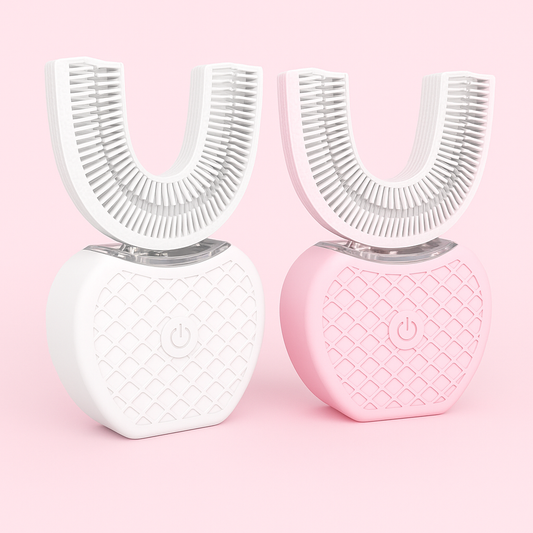Introduction: Why This Guide Matters
Interest in fluoride-free oral care has surged as consumers look for alternatives that combine safety, whitening performance, and supportive ingredients. If you're searching for the best way to brighten your smile without conventional fluoride formulas, this guide walks you through the science, formulation, safety, and daily use of fluoride-free whitening toothpaste featuring xylitol and niacinamide. Whether you search for 'good whitening toothpaste', 'toothpaste without fluoride', or 'best toothpaste for whiter teeth', you'll find practical, evidence-based advice to choose and use the right product.
Section 1: The Rise of Fluoride-Free Toothpaste
Toothpaste without fluoride has become a notable segment of oral care for a few reasons:
- Consumer preference for natural or simplified ingredient lists.
- Concerns about fluoride ingestion by young children or individuals avoiding fluoride for personal reasons.
- Innovations in alternative active ingredients that support enamel, gum health, and whitening without fluoride.
It's important to balance cosmetic goals with cavity prevention. Fluoride remains a proven tool to reduce caries; if you opt for fluoride-free products, work with your dentist to ensure comprehensive cavity prevention strategies are in place.
Section 2: Core Actives — Xylitol & Niacinamide Explained
Two ingredients rising in popularity for fluoride-free toothpaste are xylitol and niacinamide. They offer mechanistic benefits that support both health and appearance.
Xylitol: How a 'Sweet' Molecule Protects Teeth
Xylitol is a sugar alcohol naturally present in fruits and vegetables. In oral care it is valued because:
- It inhibits growth and adherence of Streptococcus mutans and other acid-producing bacteria by disrupting their metabolic pathways.
- It can reduce plaque formation over time when used consistently.
- Unlike sugars, xylitol is not fermented by cariogenic bacteria and so does not feed decay processes.
As an ingredient in whitening toothpaste, xylitol contributes to a healthier oral environment and can be a functional alternative to aggressive chemical antibacterials.
Niacinamide: A Promising Support for Gums and Tissue
Niacinamide (vitamin B3) is better known in skincare, but emerging research suggests oral benefits including:
- Modulation of mild inflammatory responses in gingival tissue.
- Support for mucosal barrier function and tissue resilience.
- Potential contribution to improved subjective gum appearance and reduced redness.
Niacinamide in toothpaste should be regarded as supportive—helpful for gum health and comfort—rather than a primary whitening agent.
Section 3: How Fluoride-Free Toothpaste Whitens Teeth
Whitening is a combination of stain removal and optical improvement. Fluoride-free formulations use several strategies:
- Controlled abrasives: Gentle polishing agents (hydrated silica, calcium carbonate) remove extrinsic stains while keeping RDA low-to-moderate to protect enamel.
- Enzyme systems: Proteolytic enzymes can break down organic films that trap pigments, helping lift stains without peroxide.
- Chemical alternatives: Compounds like sodium bicarbonate neutralize acids and lightly abrade; low-level peroxide alternatives may be used in regulated products.
- Optical brighteners: Safe, temporary agents or reflective microparticles can enhance perceived whiteness immediately after brushing.
Pairing these methods with xylitol and niacinamide creates a multi-faceted approach: remove and prevent stains, support tissue health, and maintain a microbiome less prone to discoloration-causing biofilms.
Section 4: From Lab Bench to Toothpaste Tube — Development Steps
Formulating an effective fluoride-free whitening toothpaste requires systematic lab work and rigorous testing:
- Ingredient selection & sourcing: Choose food-grade xylitol, stabilized niacinamide, enamel-safe abrasives, safe humectants (e.g., glycerin, sorbitol), gentle surfactants, and preservatives that comply with regional regulations.
- Compatibility and stability testing: Verify that xylitol and niacinamide remain stable in the presence of other components, and that the product stays free of microbial contamination over its shelf life.
- Abrasivity testing (RDA): Measure Relative Dentin Abrasivity to ensure stain removal without excessive enamel or dentin wear.
- Sensory profiling: Optimize flavor, foaming, texture, and aftertaste because user acceptance is critical to consistent use.
- In vitro and ex vivo screening: Use laboratory models to test stain removal, antibacterial effects of xylitol, and anti-inflammatory signals of niacinamide.
- Clinical trials: Short-term studies (4–8 weeks) often measure surface stain reduction, shade change, plaque index, and gum health markers. Longer studies evaluate caries incidence and cumulative enamel effects.
- Regulatory compliance: Ensure labeling, claims, and ingredient use meet national health authority rules for cosmetics vs. therapeutic products.
Section 5: Interpreting Clinical Evidence — What to Expect
When reviewing claims about 'toothpaste whitening best' or 'toothpaste that whitens teeth', consider these points:
- Look for randomized controlled trials or clinical studies supporting whitening claims, ideally published or summarized on the brand site.
- Pay attention to study length: short-term cosmetic brightness is common; meaningful enamel whitening often requires longer exposure or adjunctive in-office treatments.
- Assess secondary outcomes: reductions in plaque, improved gum indices, and decreased sensitivity indicate broader oral health benefits.
Section 6: Practical Use — How to Maximize Results
Effective use of fluoride-free whitening toothpaste combines technique, routine, and complementary habits:
- Brush twice daily for two minutes using a soft-bristled brush and gentle, circular strokes.
- Use a pea-sized amount for adults; for children follow pediatric dosing guidance.
- Complement brushing with daily interdental cleaning: floss, picks, or interdental brushes remove plaque and stain sources between teeth.
- Reduce exposure to staining substances (coffee, tea, red wine, smoking). Rinse with water after consuming them.
- If you experience sensitivity, reduce frequency temporarily and consult your dentist for tailored recommendations.
Section 7: Choosing the Right Product — A Checklist
When comparing options, use this checklist to find a high-quality fluoride-free whitening paste:
- Contains xylitol and niacinamide (listed prominently on the label).
- Clear RDA or note indicating enamel-safe abrasivity.
- Clinical evidence or third-party testing for whitening and gum health.
- Transparent ingredient sourcing and manufacturing standards.
- Positive verified reviews referencing whitening results and reduced sensitivity.
- Free from unnecessary harsh surfactants and strong flavors that could discourage regular use.
Section 8: Common Questions Answered (FAQ)
Q: Will a fluoride-free toothpaste with xylitol prevent cavities?
A: Xylitol reduces levels of cariogenic bacteria and can contribute to lower cavity risk when used consistently, but it is not a direct substitute for fluoride's proven remineralization benefits. Discuss long-term strategies with your dentist.
Q: Is niacinamide toothpaste safe daily?
A: Yes — niacinamide at concentrations used in oral care is generally well tolerated. It serves as a supportive ingredient for gum health. Stop use if irritation occurs and consult a professional.
Q: How soon will I see whitening results?
A: Many people notice removal of surface stains within 2–6 weeks of consistent use; optical brighteners can create immediate temporary improvement. Deeper intrinsic stains may need professional treatments.
Q: Can I use fluoride-free whitening toothpaste with braces or dental restorations?
A: Use caution: mechanical stain removal may be limited around brackets and restorations. Consult your orthodontist or dentist for tailored cleaning strategies.
Section 9: Safety Considerations and Special Populations
Keep these safety tips in mind:
- Children: supervise brushing and use age-appropriate amounts to limit ingestion. Many regions recommend a smear amount for under-3s and pea-size for 3–6 year olds—even for fluoride-free products.
- Pregnancy and nursing: ingredients like xylitol and niacinamide are generally safe, but consult your healthcare provider if you have specific concerns.
- Allergies and sensitivities: check labels for flavorings or essential oils if you have sensitivities; perform a patch test by rinsing a small amount if you're unsure.
Section 10: Environmental & Ethical Considerations
Many consumers choose fluoride-free toothpaste with sustainability in mind. Look for:
- Recyclable or reduced-plastic packaging.
- Ingredient transparency and ethically sourced actives.
- Leaping Bunny or cruelty-free certifications if that matters to you.
Section 11: Product Discovery — Where to Shop & What to Try
When searching for the ideal product, use targeted search phrases like 'toothpaste with xylitol', 'niacinamide toothpaste', 'toothpaste that whitens teeth', or 'fluoride toothpaste free'. Brands that provide clinical summaries, ingredient sourcing, and clear RDA data typically earn higher trust.
For shoppers exploring reputable formulations, consider browsing lines positioned as the best toothpaste for whiter teeth or a trusted toothpaste without fluoride. You can also search product pages marketed as 'toothpaste whitening best' or 'good whitening toothpaste' to compare ingredient lists and user reviews.
Section 12: Avoiding Pitfalls — Myths & Misconceptions
- Myth: All whitening toothpastes are abrasive and harmful. Fact: Well-formulated whitening pastes balance mildly abrasive polishing agents with safe RDA ratings and protective humectants to minimize long-term wear.
- Myth: Xylitol instantly prevents cavities. Fact: Xylitol helps reduce pathogenic bacteria but works best as part of a consistent oral hygiene routine.
- Myth: Niacinamide whitens teeth directly. Fact: Niacinamide supports tissue health and may improve overall oral appearance; whitening effect is primarily from stain removal technologies.
Section 13: Integrating Whitening Toothpaste Into a Full Oral Care Plan
For best results, pair your fluoride-free whitening toothpaste with these practices:
- Regular dental check-ups and professional cleanings every 6–12 months (or as recommended).
- Daily interdental cleaning and tongue cleaning to reduce stain-harboring biofilms.
- Smart dietary habits: limit frequency of acidic and pigmented foods; use a straw for staining beverages when possible.
- Consider periodic professional whitening if desired shade goals exceed what daily toothpaste can achieve.
Section 14: Keywords & SEO-Friendly Shopping Tips
If you're researching online, include multiple search phrases to find product pages and reviews: 'toothpaste with xylitol', 'toothpaste without fluoride', 'best toothpaste whitening teeth', 'treatment for teeth', 'niacinamide toothpaste', and 'best toothpaste for whiter teeth'. For brand-specific browsing, you may find curated pages offering product lines promoted as 'toothpaste whitening best' or 'fluoride toothpaste free'. For example, review Havana Body's offerings to compare formulations marketed toward whitening and gum support: explore their pages for 'toothpaste with xylitol' and 'toothpaste that whitens teeth' to see ingredient breakdowns and user feedback.
Section 15: Final Recommendations & How to Decide
To choose the right fluoride-free whitening toothpaste formulated with xylitol and niacinamide:
- Prioritize products with transparent ingredient labels and RDA info.
- Seek brands that publish clinical data or third-party testing.
- Consider trial sizes to evaluate tolerance and whitening performance before committing to larger purchases.
- Balance cosmetic desires with professional advice on cavity prevention and enamel integrity.
Conclusion — Try a Thoughtful, Science-Backed Option
Fluoride-free whitening toothpaste that pairs xylitol's bacterial support with niacinamide's tissue benefits offers a modern approach to healthier, brighter teeth. These formulas focus on safe stain removal, microbiome balance, and gum comfort—key factors when searching for products labeled as 'good whitening toothpaste' or 'toothpaste whitening best'.
If you want to explore trusted formulations and compare ingredient-focused options, check out Havana Body's selection of products presented as 'toothpaste without fluoride' and the 'best toothpaste for whiter teeth'. Visit Havana Body's site to review product details on their toothpaste with xylitol and discover options marketed as the best toothpaste whitening teeth. If a product fits your needs, consider purchasing a trial to see how it performs in your daily routine.
Note: This article is informational and not a substitute for professional dental advice. If you have cavities, gum disease, sensitivity, or other oral health concerns, consult a licensed dentist before switching major aspects of your oral care routine.


